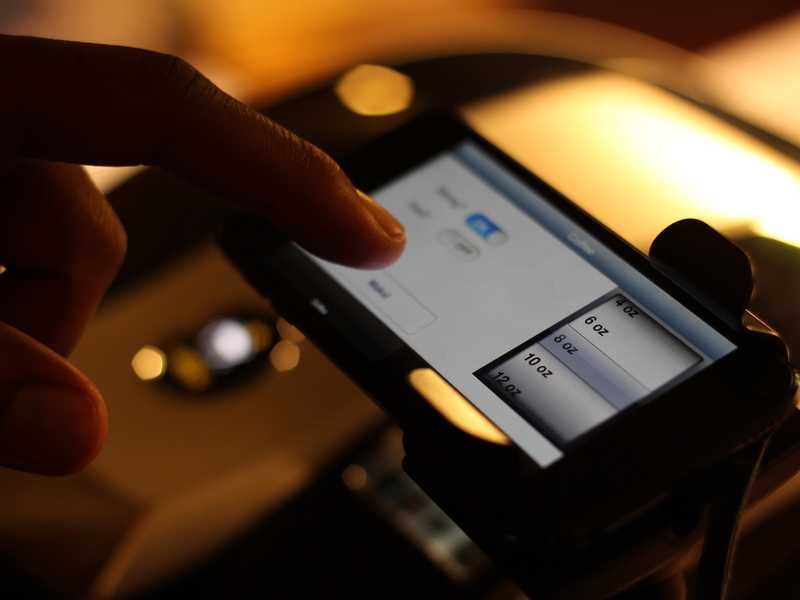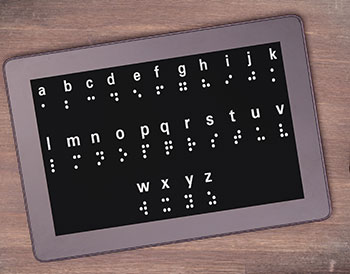Empowering Self-reliance With Assistive Technology for the Blind
The assimilation of assistive technology right into the lives of individuals with aesthetic disabilities stands for a considerable innovation in promoting self-reliance and self-sufficiency. From cutting-edge screen visitors to innovative wise canes, these tools not only enhance day-to-day navigating and communication yet also encourage customers to involve meaningfully in various elements of life. As we check out the myriad advantages and real-world applications of these technologies, it becomes important to examine the underlying aspects that add to their effectiveness and the possibility for future growths in this crucial field.
Review of Assistive Modern Technology

The development of assistive modern technology is based in principles of inclusivity and empowerment. Developments in software, equipment, and sensory enhancements offer users with choices tailored to their certain needs. From display visitors that convert text to speech, to tactile devices that share details via touch, these tools change the means individuals engage with their environments.
In addition to practical applications, assistive innovation cultivates greater social inclusion and participation in numerous markets, including education and employment (Smart glasses for the visually impaired). As r & d remain to advance, the possibility for assistive modern technology to further enhance the lives of visually impaired individuals stays encouraging, leading the way for a more equitable culture where every person can grow
Kinds Of Assistive Tools
A variety of assistive devices have actually emerged to support individuals with aesthetic disabilities, each created to fulfill specific needs and improve day-to-day functioning. These devices vary from low-tech services to modern developments, supplying diverse alternatives for customers.
Low-tech gadgets consist of magnifiers and large-print materials that help in analysis and writing. Braille tools, such as Braille stylus pens and slates, allow tactile reading and communication. Alignment and movement help, like white canes, assist individuals navigate their atmosphere safely.
On the higher end of the range, digital zoom systems and screen readers provide significant assistance. Electronic magnifiers enable users to enlarge message and pictures on screens, while display viewers transform digital content right into manufactured speech, helping with accessibility to info on computer systems and smart devices.
Smartphone applications also play a vital function, offering functions like text recognition and navigating support. Wearable technology, such as smart glasses equipped with augmented truth, is becoming a promising device to boost situational understanding.
Benefits of Assistive Innovation
The integration of assistive modern technology substantially improves the lifestyle for individuals with visual disabilities. These modern technologies empower users by advertising self-reliance, allowing them to navigate their environments a lot more efficiently and do day-to-day jobs with greater simplicity. As an example, display visitors and magnification software application permit people to accessibility electronic information, cultivating instructional and expert opportunities that might have formerly been out of reach.
Moreover, assistive gadgets such as wise walking sticks and GPS applications provide real-time navigation assistance, boosting movement and safety. This increased autonomy not only improves self-worth but also encourages social involvement, allowing individuals to get involved even more fully in their communities.
Assistive technology also facilitates interaction, assisting users connect with others with voice acknowledgment and text-to-speech applications. This capability is vital for keeping partnerships and accessing crucial information.
Furthermore, the customization choices available with lots of assistive modern technologies guarantee that users can tailor gadgets to their certain demands, even more boosting use and effectiveness. On the whole, the benefits of assistive innovation for people with aesthetic impairments are profound, promoting an extra comprehensive society where everyone can pursue their ambitions and objectives.
Case Researches and Success Stories
Highlighting the transformative impact of assistive technology, many study illustrate exactly how individuals with visual problems look at here have effectively incorporated these devices right into their lives. One engaging example entails an university student that used screen reading software application to browse scholastic products and on-line sources successfully. This modern technology not just promoted her education however additionally enhanced her self-confidence in taking part in discussions and group jobs.
An additional instance research study features an expert that employs a mobile phone application created for navigation and object acknowledgment. By utilizing this application, he has gained back freedom in both his individual and workplace, permitting him to commute separately and engage with associates much more successfully.
Furthermore, a retiree shared her experience with braille e-readers, which allowed her to access a substantial range of literature and stay connected with her neighborhood through book clubs.
These success tales highlight the important role of assistive innovation in cultivating independence, enhancing lifestyle, and advertising social assimilation for individuals with aesthetic impairments (Voice-activated assistive devices). By accepting these innovative tools, customers can overcome obstacles and take possibilities that add to their expert and individual satisfaction

Future Fads in Assistive Modern Technology
Development in assistive modern technology is positioned to redefine the landscape of assistance for individuals with visual impairments. Emerging trends stress the combination of man-made intelligence (AI) and maker learning, which enhance the functionality of gadgets that aid with navigating and information ease of access. AI-driven applications are currently capable of analyzing aesthetic information in real-time, enabling customers to involve with their setting more independently.
Moreover, the advancement of wearable technology is advancing swiftly. Smart glasses furnished with increased reality (AR) can offer audio summaries of surroundings, changing exactly how customers interact with public rooms. These gadgets not only advertise autonomy yet likewise foster social inclusion.
Furthermore, the Internet of Points (IoT) is making homes smarter, permitting for seamless connection between day-to-day devices and assistive tools. This connectivity empowers users by enabling voice-activated controls and automatic reactions customized to private needs.
Verdict
Finally, assistive innovation plays an essential role in empowering people with aesthetic impairments by enhancing their self-reliance and interaction with their surroundings. The varied series of gadgets and applications available not only helps with navigation and interaction but additionally advertises social integration and chances for specialist and personal growth. As advancements continue in this area, the capacity for improving the lifestyle for those with visual disabilities will certainly broaden, cultivating better one hour eyeglasses near me autonomy and empowerment.
